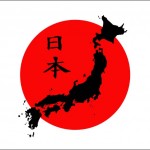Dušan Radosavljević is named for the UNISEC (University Space Engineering Consortium) point of contact (POC) in Serbia.
www.unisec-global.org/pointofcontact.html
www.unisec-global.org/dusan.html
Dušan Radosavljević is named for the UNISEC (University Space Engineering Consortium) point of contact (POC) in Serbia.
www.unisec-global.org/pointofcontact.html
www.unisec-global.org/dusan.html
The Unity program represents a response to the increasing need of individuals and groups for easier access to Space, in order to achieve sustainable progress in their work and development of this area.
The concept itself emerged in the post-conflict region as an attempt to re-establish the cooperation of the people in the region, but this time in a completely different way, which in itself goes beyond the current mode of thinking and demands a new approach in international relations, whereby independence in creation of each participant is not jeopardized, and on the other hand there is a constant presence of the necessity of cooperation among the participants. In this way, everyone achieves both individual and group goals, and progress is inevitable.
Technically, the Unity program is based on CubeSat standards (www.cubesat.org), since the main deployer (Mother Craft – MC) is CubeSat, primarily by dimensions and basic characteristics. The deployer MC is independent of the payload that it carries and which will be delivered into orbit. Most precisely, MC is an adapter that allows that non-standard satellites (DS) can be used in standard POD deployers.
The Unity program enables the low-cost launch of satellites into various orbits. The price of the launch of 1DS (11.0×10.0x2.4cm/250g) is 12000 – 14000 euros (payment in two installments).
| more details |
December 2-4, 2017
Engineering Faculty of Sapienza – University of Rome
Via Eudossiana 18,00184 (Rome, Italy)
| CLTP website |
By attending this course, the training process was completed in order to acquire theoretical and practical knowledge and experience of space engineering, ie. satellite development. The process lasted three years and started in Japan (August-September 2013) by attending a theoretical / practical part based on the Japanese CanSat model (from mission definition, through the design of small satellites / CanSat and missile launch, balloon and plane, to the analysis of the complete process).
The acquired certificate is recognized internationally.
Program je održan u periodu od 30. novembra 2015. do 04. januara 2016. godine u organizaciji European Space Agency (ESA).
Program je organizovan u vreme održavanja “COP21 | United nations conference on climate change” kao vid podrške ovako značajnom događaju, odnosno kao doprinos širenju svesti o ozbiljnosti situacije u kojoj se Planeta nalazi, kao i edukovanju participanata o aktuelnim i planiranim projektima opservacije Zemlje satelitskim putem i njihovom značaju.
P r e d a v a č i:
Professor of Earth Observation Science in the Department of Geography, King’s College London, and a Divisional Director of the NERC National Centre for Earth Observation (NCEO).
Senior lecturer in Remote Sensing in the Department of Geography, UCL. Mat is a member of the Environmental Monitoring and Modelling Group and the NERC National Centre for Earth Observation (NCEO).
Climate scientist and Head of the Open Oceans research group at the British Antarctic Survey. Emily is also a fellow of Darwin College, Cambridge and an associate of the Cambridge Centre for Climate Change Mitigation Research.
Professor of Earth Observation at the University of Leeds. Andrew is also the Director of the NERC Centre for Polar Observation and Modelling and Principal Scientific Adviser to the European Space Agency’s CryoSat-2 satellite mission.
Emeritus Professor of Meteorology, University of Reading. Alan is the Founder and former Director of the NERC National Centre for Earth Observation.
Spoljna stručna lica koja su doprinela realizaciji programa:
Kurs je održan u periodu od 13. jula do 09. avgusta 2015. godine u organizaciji University Space Engineering Consortium (UNISEC), Japan.
Pohađanjem ovog kursa završen je proces obučavanja vezan za sticanje osnovnih znanja i iskustava iz svemirskog inženjeringa. Proces je trajao dve godine, a započet je u Japanu (avgust-septembar 2013. godine) pohađanjem teorijsko/praktičnog dela zasnovanog na japanskom modelu CanSat-a (od definisanja misije, preko konstruisanja malog satelita/CanSat i lansiranja raketom, balonom i avionom, do analize kompletnog procesa).
Stečeni sertifikat je priznat na međunarodnom nivou.
Razlog za uspostavljanje saradnje proizilazi iz veoma jednostavne činjenice, a to je da u ovoj oblasti jedni bez drugih ne možemo!
Sajt SRV-a: http://www.srv.org.rs/


Friends from Japan – members of the IfES (Institute for Education on Space), members of UNISEC (University Space Engineering Consortium) and individuals – have expressed deepest compassion with citizens of the Republic of Serbia and the region affected by the catastrophic floods and sent help, those in need, through the Mission of the Republic of Serbia to the European Union and the Republic of Serbia Embassy in Tokyo.


Second phase of standardization of system for satellite monitoring of surface water quality in real-time and early-warning system (WQM) has been completed.
All electronic components has been tested on the field using a GSM module as transmitter. For storing the electronics was used a test buoy that will in the third, final, phase also be standardized. Standardization of the buoy is directly related to HUMSAT transmitter for which everything is ready and that will, of course, replace the GSM transmitter.
While we wait the HUMSAT transmitter from partners from the University of Vigo (Spain), it will be carried out further consultations with the Republic Hydrometeorological Service and the Agency for Environmental Protection.